***SPOILERS*** for all Seasons of BREAKING BAD (except the Jesse movie, which I have yet to see) and Seasons 1-3 of OZARK
INTRODUCTION
With Season 3 of Ozark dropping recently, it’s time to explode one of the most frequent myths about the hit Netflix show: that it’s simply a re-heated Breaking Bad transposed to Missouri. There are indeed some shallow similarities. Both centre on an American family under extreme pressure. Both have protagonists who become increasingly enmeshed in criminal endeavour. Both have Mexican drug cartels as their Big Bad. But beyond these points of comparison, the two shows diverge in just about every way.

SET-UP
In Breaking Bad we first meet Walter White as a High School chemistry teacher. As the title of the show suggests, Breaking Bad is about a character who “breaks bad”. At the outset he may be intensely neurotic, deeply unhappy, unfulfilled and undergoing an existential crisis, but he is following the moral tracks expected by both his society and his family. In contrast, Marty Byrde is a crook at the outset; he’s already laundering money for the Navarro cartel – he just narcissistically assumes he can carry on as things are without his role (and the involvement of his family) either escalating or completely falling apart.
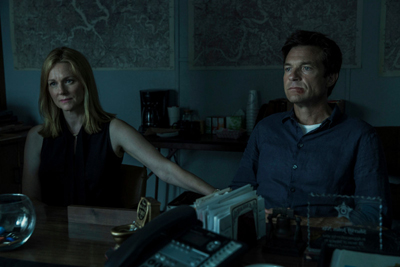
THE SETTING
It’s ironic taking into account the respective names of the shows, but Breaking Bad is the show in which the setting (specifically Albuquerque, New Mexico) is fully a character, while the Ozarks, for all its beauty, isn’t a character in Ozark, rather it’s a backdrop, as well as providing the multiple milieus that make the show so extraordinary. Notice how in Season 3 the various trips to Mexico are strictly by edit: cutting immediately to the drama without any filmic location-mood (this is, of course, also a production issue, but necessity and virtue are in total alignment here). This isn’t a deficiency – indeed it links directly to the next element…
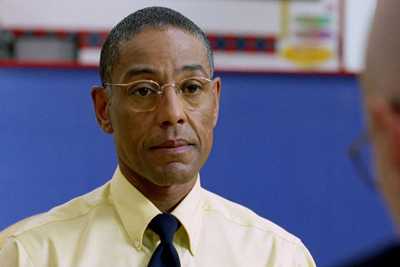
GENRE and PROTAGONIST/S
In all great writing (and both shows are exceptional) genre, protagonist/s arc/s and theme should be seamlessly integrated and this is true of both shows. Ozark is at core an ensemble drama, albeit one that creates conflict, jeopardy and stakes from its criminal component. Breaking Bad is, at core, a protagonist-centred tragedy, with all of the Ancient Greek and Shakespearean resonances this should evoke, along with the religious, mystical, mythic and horror-toned elements that tragedy demands.
White is a brilliantly clever protagonist name: an everyman in extraordinary circumstances, a psychological archetype onto which the audience can project shared mythology, the disaster who ultimately becomes a tragic hero. The Byrdes by contrast are pretentious to their very core: their believe that, like their country, their very existence gives them licence to take whatever they want, whatever the cost. Marty and Wendy sound like the first names of the protagonist couple in a comedy – again this is entirely deliberate.
Walter’s trajectory is “fall then rise” in that he descends ever deeper into the circles of hell but redeems himself at the end by sacrificing himself to save Jesse. Marty’s trajectory is the opposite: “rise then…” (well we don’t know as yet, but we can make an educated guess). Indeed, if Marty and Wendy are like any Breaking Bad character in an archetypal sense it is Gustavo Fring rather than Walter (with Ruth as their Walter).
Unlike Breaking Bad, Ozark has multiple protagonists all with their own arcs, an element that makes the show so utterly absorbing. So, Wendy is also on a “rise then…” arc and so is Ruth (albeit Ruth more closely equates to the uncarved block of Jesse). Only Darlene bucks the ensemble trend with her “fall then rise” arc. And Navarro, of course, has nowhere to go but down. In terms of genre, Ozark has wonderfully subtle strands of both farce and satire, which are wholly absent from Breaking Bad.
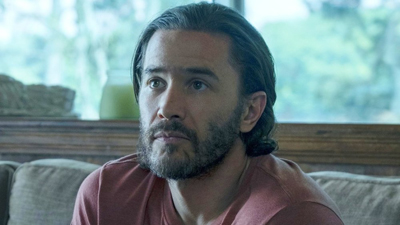
THEME
Breaking Bad traverses family drama, crime drama, myth and religion, but ultimately its deepest theme is that of a feature film: that loss of morality and loss of self go hand-in-hand. This is the same theme as a plethora of movies about gangsters. Breaking Bad dives into the dark underbelly of the American dream in the same way as The Godfather or a Scorsese film.
In contrast, Ozark, with its deeply ingrained and immensely subtle layers of satire, is about the American dream as it actually is: a key moment in Season 3 comes when Ben and Wendy are sitting in Wendy’s car in a parking lot, chowing-down on fast food (could the scene be more American already?) and Ben tells Wendy that she should have stayed in politics, “You could still be a big deal! This is America!” (and a Childish Gambino reference to boot).
Indeed, in Season 3 the introduction of Wendy’s brother Ben makes the case absolutely overt: Marty, Wendy, Darlene and Ruth are psychopaths (with only Ruth showing any signs of the capacity for genuine positive change). But Ben is mentally ill. The deliberate juxtaposition is glorious, drawing out both that Ben is the only sane one in a nest of narcissists, and that it’s Ben who must be excised from this snake pit so that the others don’t have to look at themselves in the mirror. The deep theme of Ozark being that America is, quite literally, insane.
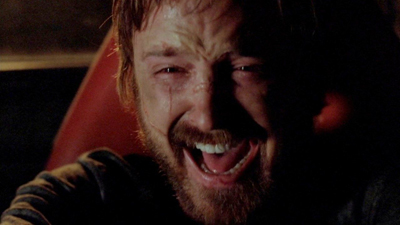
FAMILY
In Breaking Bad, Walter’s family are secondary because they are in service to Walter’s arc as tragic protagonist (as, indeed, is everyone else). The only other genuinely rounded character is Jesse and this is, of course, not an accident, as he’s the only other character from whose POV you could reasonably view the drama. “Who changes the most?” as the screenwriter’s rubric goes. Well, Walter redeems himself through death, so it must be Walter, but Jesse comes a close second as, in the show at least, he transforms from an abject loser to someone reborn, with potential for new life.
There’s always a sense in Breaking Bad that Jesse is the son that Walter wishes he had, and the guilt of feeling this only feeds into Walter’s self-hatred. In this sense the symbolic sacrificing of Walter for his archetypal “son” is apt. But this mythic element also means that Walter’s own family really do get the thin end of the wedge dramatically.
In Ozark, the Byrdes could be seen as a single character, so unified are they most of the time (obviously there is much push-and-pull, with at least one of the four pulling at any one time, whether it’s Charlotte’s emancipation, Marty sleeping in a motor lodge or Jonah at the end of Season 3). But the key here is that the Byrdes are ultimately a single protagonist: just a normal white-collar middle-class American family who can’t get ahead by being honest. This only works because individually all four are such wonderfully rounded characters.
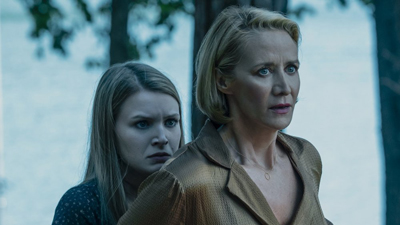
FEMALE CHARACTERS
There is a surfeit of top-notch female characters in Ozark, in contrast with the almost total absence of anything but foils for Walter and Jesse in Breaking Bad. Wendy, Ruth, Helen Darlene, Charlotte – it’s an embarrassment of riches with a tranche of brilliant performances underpinning them. As I’ve said elsewhere with regard to Gotham, there is no greater honour that writers can give to female characters than allowing them to be as gloriously dysfunctional, as psychopathic, as venal and as violent as the male characters. Ozark sings this message loud and clear (and I’m hoping that the boss of the Lagunas cartel turns out to be a woman too).
Following on from how well-developed Wendy and Charlotte are: as with everyone else who watches it, one often can’t help but watch Ozark as though Ruth is the show’s intended protagonist, with everyone else as her antagonist, either intentionally or by default. It’s no accident that Ben, the madman who can see everything for what it really is, falls for Ruth, the only character other than perhaps Wyatt who has a chance of making it out of the entire run alive.
As mentioned, in this configuration Marty is Fring and Ruth is Walter. Or Ruth is Jesse and Marty is Walter – indeed there is a sense that just as Jesse is Walter’s surrogate son, Ruth is Marty and Wendy’s surrogate daughter, but that relationship is entirely betrayed by the end of Season 3 and it’s hard to see a way back. Lines are now drawn for a locals (Langmores and Snells) vs. incomers (Byrdes) war in Season 4.
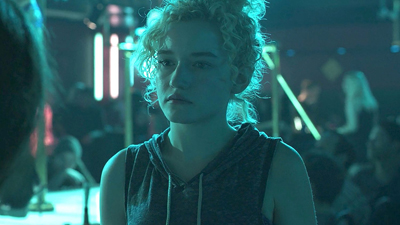
ENDINGS
It’s hard to believe that Gilligan had anything but the eventual ending in mind for Walter and Jesse as it fits so elegantly with everything that has come before. The plots of tragedies are archetypally delineated and should have an inexorable gravitational pull towards an inevitable ending. This is a double-edged sword, as it means that over multiple seasons, an audience can become exhausted and/or bored waiting for this inevitable climax (and these are understandable complaints about Breaking Bad).
Conversely, due to its genre, character configuration and tonality, Ozark could satisfyingly end in multiple different ways. Obviously, someone has to be disappointed, but my money is on Ruth to beat the house. Roll on Season 4…
BREAKING BAD is available to purchase on Amazon Prime.
OZARK is on Netflix.
